Viking History: The Building and construction of Asgard’s Defenses and the Production of Sleipnir in Norse Folklore

 A long period of time ago, after the war between the Aesir and Vanir that…
A long period of time ago, after the war between the Aesir and Vanir that…
What did Viking Villages look like?

While we usually think of the Vikings as travelers and raiders, they did not in fact live on their longboats or in military camps. The majority would have spent most of their lives in villages, not too dissimilar from the English and French villages that they were raiding and conquering.
While the exact composition and nature of Viking villages depend on the region in which they were located, and they also changed over time, there are a few characteristics that are fundamental to Viking villages. Let’s take a look.

Farmstead, Village, or Fortress
The size of Viking villages varied greatly.
In poorer and harsher areas, farmsteads were isolated and separated by relatively long distances. This is especially common in Iceland, where large farmsteads are spotted across the landscape.
In more prosperous areas, a dozen farmsteads might cluster together to make a small village. The houses of the inhabitants of these small Viking towns were clustered together in the center of the town and enclosed by walls, as much to keep livestock from wandering through as offering protection from enemies. Farm and grazing land then surrounded the village.
Even in the riches areas where the Vikings built their distinctive defensive ring fortresses, there were usually fewer than 20 longhouses – the name that we giving to Viking houses – within the fortress walls.
The largest surviving ring fortress, at Aggersberg in Denmark, only had an internal diameter of 240 meters and archaeological remains of 48 houses survive.
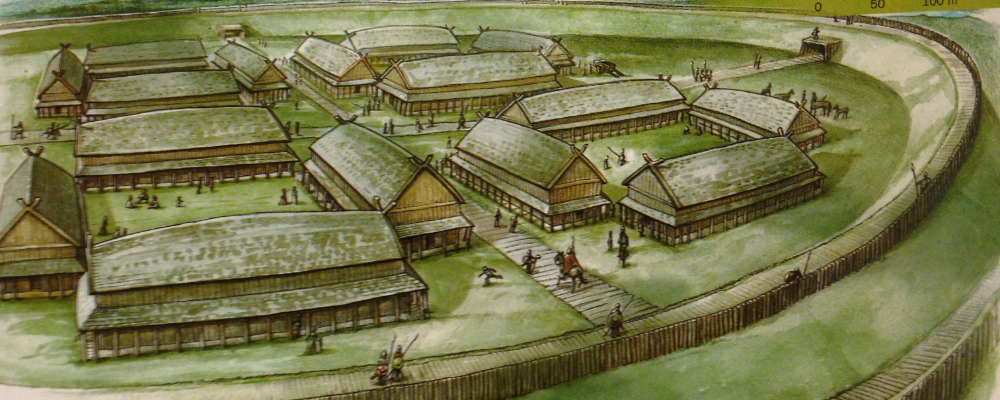
Location, Location, Location
The success and prosperity of a Viking village often depended on its location. Most villages were located near the coast or along a fjord. This was, firstly, because fishing was fundamental to their way of life, and secondly because it made transport easier. It was much easier for the Vikings to travel by boat than try and cross the rugged landscape.
Settlements were also usually placed on high ground to ensure the best possible drainage. While wells were common features of larger villages, farmsteads and smaller villages were almost always located close to a source of fresh running water.
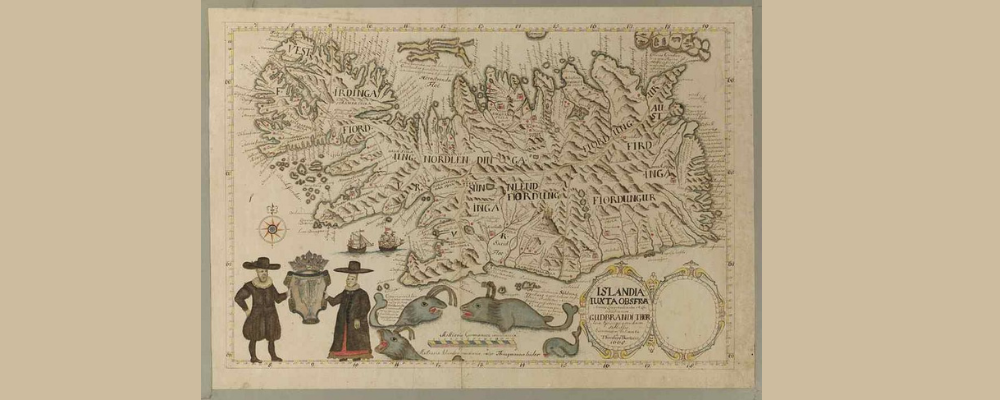
Household
Households varied greatly in size depending on the wealth of the inhabitants. Most dwellings were centered on a longhouse, so-called because of their rectangular shape.
In Norway, these houses were usually built from wood, with turf or thatched roof. Meanwhile, in Scotland, stone houses were more common as wood was relatively scarce. The Vikings were inventive and used whatever materials were available to them locally.
For poorer people, this may have been their only building. The family would have lived here, and they would have been joined inside by their livestock in the colder winter months.
Richer farmsteads also had multiple outbuildings, both for sheltering livestock and creating space for other activities, such as brewing.
The household would have been composed of the owner of the farmstead and his family, which was an extended family of parents and cousins, rather than just the nuclear family.
Paid hands would also have lived and worked on the farmstead, alongside slaves, which were common in the Viking world. Slaves would have been given the less desirable jobs on the farm.

Commodities
To make a living, the Vikings fished, sewed crops, and raised cattle. As we have already said, the importance of fish in the Viking diet is one of the main reasons that settlements were always located near the coast of rivers.
The process of cultivating crops would have been carried out predominantly by women, children, and slaves while the men were off raiding. The most common grains were barley, rye, and oats.
But by far the most important commodity on any Viking farm was its livestock. In fact, cattle were so important that the word for cattle and the word for money in old Norse are the same, fé.
The Strong farmstead in Iceland had barns with stalls for 18 heads of cattle, while Njal’s farm at Bergthorshvoll had stalls for 30 heads. Most Viking farms probably have between 15-40 heads of cattle.
As well as cows, the Vikings also raised sheep, pigs, goats, and even horses. Horse meat was actually a delicacy among the Vikings until it was outlawed with the rise of Christianity.
All animals were raised to serve multiple purposes, providing milk to be made into a variety of dairy products, to provide wool, leather, and other essentials, as working animals drawing ploughs and wagons, and of course as meat, both for the dinner table and to make sacrifices to the gods.
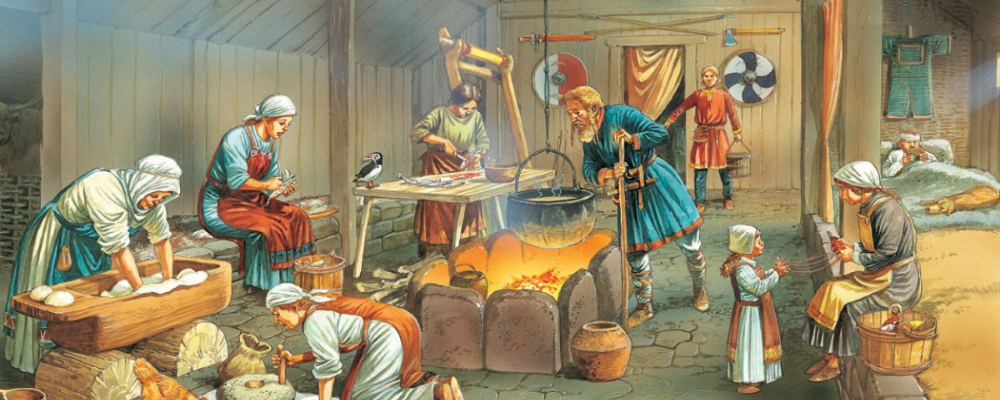
Rhythm of Life
The rhythm of life in Viking villages would have been very much dictated by the season. Plants were sown in the spring, and the men went raiding in the summer while the rest of the household worked to prepare enough food to see them through the winter months. The dark winter months would have been spent clustered together in the longhouses, telling stories, teaching children, making crafts, and more.
This is why the festivals that marked the changing of the seasons were so important in the Viking calendar, as they marked real transitions in day-t-day life.
What do you think? Would you have liked to live in a Viking village?
 Mjolnir pendants in the VKNG Collection – most common symbol worn by the Vikings
Mjolnir pendants in the VKNG Collection – most common symbol worn by the Vikings
The post What did Viking Villages look like? appeared first on Norse and Viking Mythology.
Viking Archeology: Conventional Viking Weddings

Marriage was an institution that was at the heart of Viking life, so weddings were important events that marked the change in social allegiances and status precipitated by the marriage.
The Vikings also had a feasting culture, and feasts were important for solidifying the community. And a wedding was a good excuse for a feast!
Not a lot of evidence survives about Viking weddings, and what individual weddings would have looked like would have depended on where they were, when in the Viking period they took place, and also the wealth and social status of the families involved.
But let’s take a look at some of the things that we do know about the ideas and rituals of Viking weddings, including things such as vows, the exchange of rings, special dances, and the drinking of quite a lot of mead.

Generalizing About Viking Weddings
Before we jump in, let’s just raise a word of warning on generalizing about Viking weddings. While some elements of the wedding would have been fundamental, such as hallowing the union in reference to Thor, other elements would not have been.
When you read about Viking weddings you will often see references to elaborate ritual bathing practices and the exchange of swords. But these specific rituals would have been limited to the elite. As we have talked about several times, most Vikings would not have been able to afford a sword as they were expensive both in terms of material and craftsmanship.
But the nature of the historical record is that we have more information about the elite than we do about the common person. People wrote about kings and chieftains, and their grand houses and burials have left behind more evidence than the modest houses and burials of the commoner.
So, all the elements of the Viking wedding that we are going to look at below should be taken in context. These are things that would have been done by the elite. Your common Viking probably skipped a lot of these rituals or engaged with them on a significantly more modest scale.
Viking Marriage For Love?
While there are always exceptions to the rule, Viking marriages were not generally love matches.
Marriage was a way of bringing together two families to enhance each other’s status and wealth, and a way of controlling reproduction to secure inheritance.
While the feelings of the young couple were probably not completely discarded, financial considerations and alliances would have taken priority.
Viking Women, in particular, may have had little say in their own marriage. Women were largely seen as the property of their fathers, whose “ownership” was then transferred to her husband. It is telling that a husband had the right to kill both an adulterous wife and her lover, while there was no penalty for men who had relationships outside the marriage.
While women had the right to initiate divorce, which was a relatively simple process of summoning witnesses and declaring oneself divorced, in reality, a divorced woman would have to go back to her family home, so it would be difficult for her to leave her husband without the support of her family.
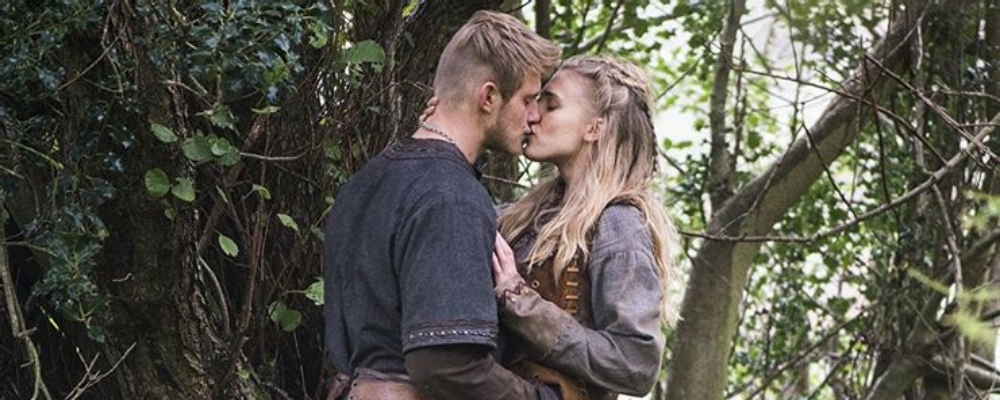
Marriage Negotiations
Because marriage was largely a business transaction, it should be unsurprising that they required quite a bit of negotiation. Marriages had long-lasting legal implications in relation to property and inheritance.
Normally the groom’s family would meet first to agree on what the financial assets of the groom would be, and what the groom’s parents would be able to provide as a wedding gift (“mundr”). They would also consider what kind of dowry they would request from the bride’s family, and what they would be willing to accept.
The groom and the important male members of the groom’s family would then take this proposal to the father or guardian of the bride. If the match was more or less favorable, and the terms more or less acceptable, the two families could then iron out the final details.
Sources suggest that in the 11th century the minimum bride price in Iceland was eight ounces of silver, and in Norway was 12 ounces of silver. But again, who exactly this rule would have applied to and who would have enforced it is unclear.
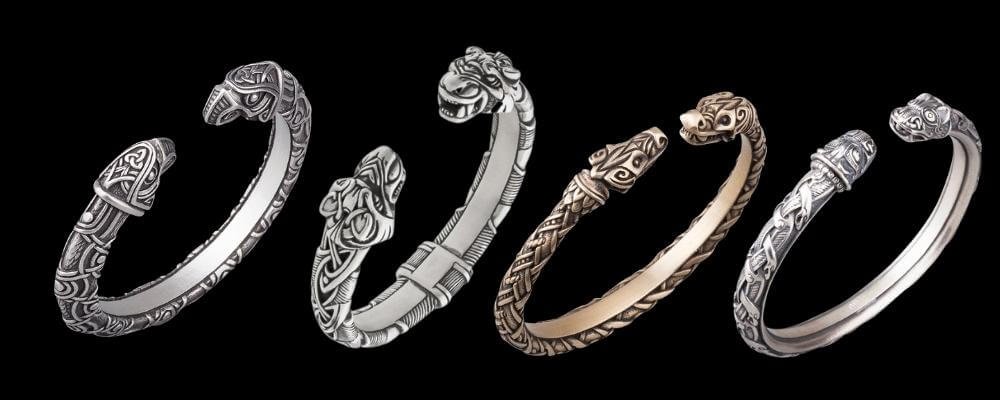 Armrings in the VKNG Collection
Armrings in the VKNG Collection
Setting A Date
Once everything was agreed upon, the family could then set a date. The wedding would usually happen on Fridays, as this was the day sacred to Frigg, the wife of Odin and the goddess of wives and wifely duties.
Big weddings that would have been held by the elite would then have included several days of feasting. And even more modest weddings may have run for several days if family and friends traveled some distance to attend and witness, and would therefore stay for a while.
It could take quite a lot of time to plan a big wedding, not least to ensure that there would be enough food and beer for all the guests. Some sources suggest that weddings might take up to a year to plan.
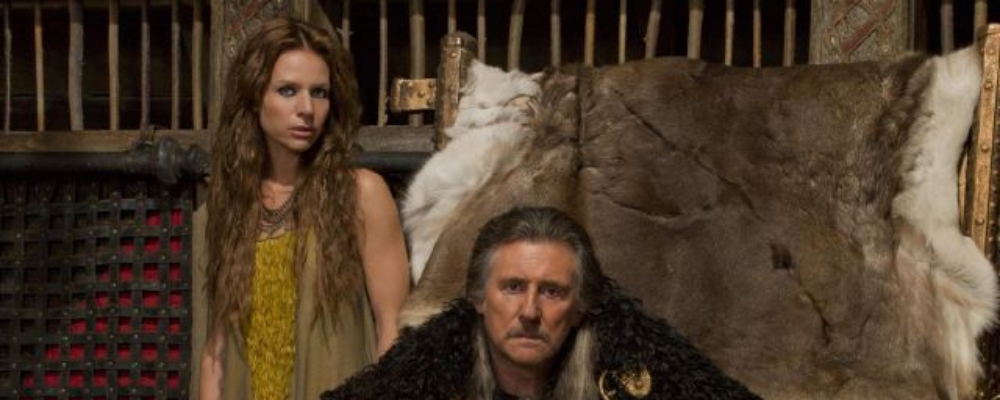
Bachelor Parties?
While there are no records of young Viking grooms being taken to strip clubs or brides dressing up in L plates, the Vikings do seem to have had their own versions of bachelor parties. Before the wedding, the bride and groom would be separated, the bride accompanied by female family members and friends, and the groom by male family members and friends.
Each party would then engage in rituals that would help the bride and groom throw off their previous lives as youths and become ready for their lives as a couple.
There are records of young brides having steam baths to open their pores, and then plunging into cold baths to close their pores. Other beautifying rituals to prepare the bride for the big day would probably also have taken place.
Meanwhile, there are stories that suggest that grooms may have gotten up to a bit of mischief, much like modern-day bachelors. One groom is described as breaking into a family tomb to steal an ancestral sword.
The Wedding Dress
No evidence survives for the bride or groom wearing specific clothing, such as white dresses for the bride, but there do seem to be traditions around the hair of the bride.
A maiden would have worn her hair long and flowing, enhanced by a bridal crown made from leaves and flowers. In the later Scandinavian period, these were replaced with silver crowns that were usually heirlooms kept within the family.
There is some evidence to suggest that at least some grooms carried an ancestral family sword during the wedding ceremony. While this would not have been true of all Vikings, if the family did have a prestigious weapon to their name, it may have been carried by the groom as part of the ceremony.

The Ceremony
The ceremony itself would not start until the bride price and dowry were officially exchanged, in front of witnesses. Only when business was done could the religious ceremony begin.
A selected elder within the community would fulfill the role of officiant. The Vikings did not have “professional priests” as is common in Christian society. Rather, community leaders took on the role as necessary.
They would begin by summoning the attention of the gods to bless the union with a sacrifice. It was traditional to sacrifice a goat to Thor, a sow to Freya, or a boar or horse to Freyr.
Whichever animal was sacrificed, and later eaten at the feast, the blood was drained into a bowl and consecrated in some way. A bunch of fir twigs was then dipped in the blood and used to splatter the couple with the blood, conferring the blessing of the gods.
At this point, the bride and groom may have exchanged keepsakes. There are stories from the later Scandinavian period of the bride and groom exchanging swords, or even rings.
The Party
After the ceremony, there was, of course, the party, which the family of the bride and groom would host jointly for their families and community. It would be the first time that the group would come together under the terms of their new social alliance.
There are some stories that the parties of the bride and groom had to race back to the location of the wedding, and that whoever arrived last had to serve the other party beer for the rest of the night. While the specifics of the games may have varied, innocent competitions like this were probably common.
At some point during the feast, Thor’s hammer would be called upon to bless the union and the new social arrangement. In some circumstances, a simulacrum of Mjolnir may have been brought forth for the purpose, while in others the calling of the hammer would have been purely metaphorical.
But what seems to have been common at all wedding feasts was a significant amount of drinking! The family had to provide enough bridal brew to keep everyone at the party in good spirits for a few days.
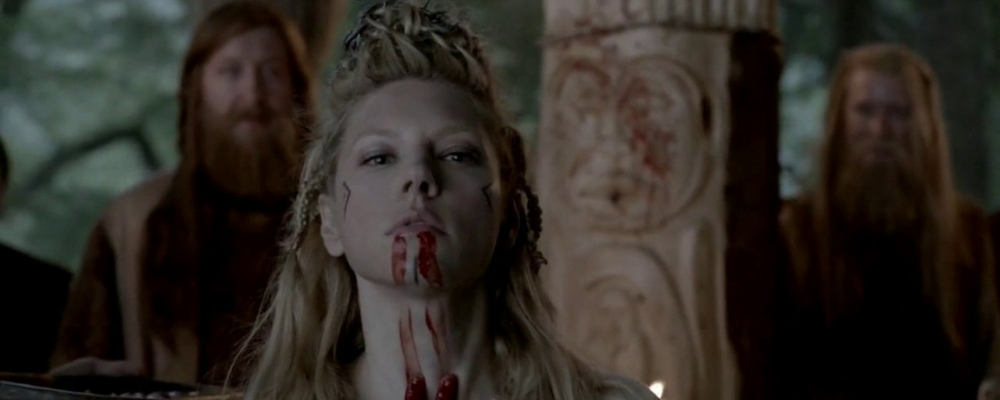
Consummation
It was quite common in ancient European cultures that the consummation of marriages had to be witnessed. Exactly what this witnessing entailed is unclear, for example, whether the witnesses were required to be in the room, or just nearby to be aware of what was going on.
In later Scandinavian culture, it was common that six witnesses were required to confirm the marriage. The Vikings may well have also had this practice.
Can You Get Married Like A Viking Today?
Many followers of the Asatru religion and just fans of Viking culture in general choose to get married according to Viking customs today. What exactly those weddings look like depends, as there is no strict standard for Viking weddings.
The most important element is to call on the Norse gods to witness and bless your union, and to embark on the new adventure with the Viking spirit in your heart.
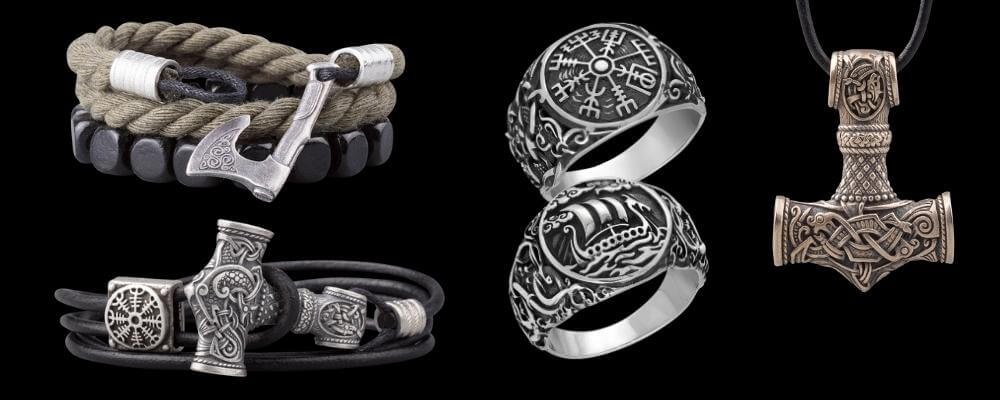 Shop the VKNG Collection
Shop the VKNG Collection
The post Traditional Viking Weddings appeared first on Norse and Viking Mythology.
Viking History: What was so special about the Viking longship?


The Viking long ship is something not as spoken about as you envision it ought to be. This powerful ship was a lethal weapon for the Vikings enabling them to browse in both shallow & & deep waters unlike their local opponents at the time. Not only where the ships able to browse in several depths but it was also extremely lightweight which was perfect for beach landings and dragging it up and down from coast. Scandinavia is filled with rocky oceans and narrow death’s which made it a place really hard to navigate; This also provided the Scandinavians a leg up when it came to trading goods because they had the ability to deliver products much faster. The Vikings genuinely surprised the remainder of the world as they were able to go narrower and further than those around them at the time. These ships were the ultimate tactical pieces in any kind of battle as they might be utilized to transfer high numbers of Vikings at the same time or perhaps to be tied together for producing a consistent platform permitting infantry warfare.
In today’s world we take a look at various types of ships from canoes to yachts & & cruise ships; it is necessary to keep in mind who was accountable for the architecture and discovery of the Viking longship. The Vikings of Scandinavia where truly thinking ahead of their time! We will always remember as we see comparable designs today!
Scandinavia is filled with rocky oceans and narrow passing’s which made it a location extremely tough to browse; This also offered the Scandinavians a leg up when it came to trading items due to the fact that they were able to deliver materials much quicker. Not just where the ships able to navigate in several depths but it was also really light weight which was best for beach landings and dragging it up and down from shore. Scandinavia is filled with rocky oceans and narrow passing’s which made it a place extremely hard to browse; This likewise provided the Scandinavians a leg up when it came to trading items due to the fact that they were able to ship products much quicker.
Viking History: Why were the Berserkers so feared in fight?
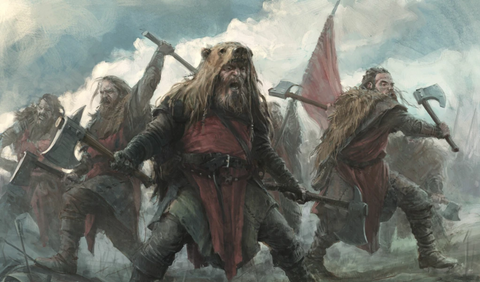
The Berserkers were a very unique group of elite Viking warriors who went to fight without your standard armor. Instead they would use animal pelts, typically from wolves or bears. The word “berserker “is from the Old Norse” serkr “meaning”coat”or” t-shirt “and”ber “the Norse word for” bear “. They fought in such ferocity with such a trance-like fury sometimes they could forget who their buddy or opponent was

There was a theory that Berserkers would take mushrooms or hallucinogens prior to battle. The hallucinogens in mix with a full adrenaline rush is a best recipe for the aggressive hypnotic trance like fury they could take advantage of.
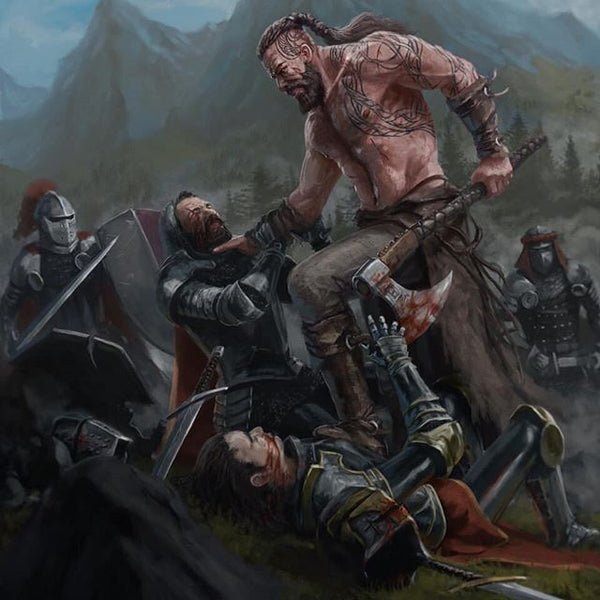
Enemies would react like a deer in headlights as Berserkers were incredibly hard to forecast let alone understand what to prepare for. It was extremely common for the Berserkers to wield an axe in each hand which enabled them to do a lot of damage from close quarters mid and striking variety throwing. They might not have had the best defensive abilities based on their clothes and weapon selection, but you did not want to be across from them in battle since the damage and raw fury is something that is almost impossible to match. The Berserker is a warrior type that will constantly hold a high and special place in history since it is hard to discover a direct comparison.
To view our everyday Viking material follow us on our platforms listed below,
Instagram @ Viking Lifestyles
Facebook @ Viking Lifestyles
TikTok @ Viking Lifestyles

< img src ="// cdn.shopify.com/s/files/1/0108/0036/5625/files/Official_Logo_large.png?v=1561848178" alt ="" style="margin-left: automobile; margin-right: auto;" >
There was a theory that Berserkers would take mushrooms or hallucinogens prior to battle.< img src="https://everythingviking.com/wp-content/uploads/2022/12/viking-history-why-were-the-berserkers-so-feared-in-battle-1.jpg "alt > Enemies would react like a deer in headlights as Berserkers were extremely difficult to anticipate let alone understand what to prepare for.
